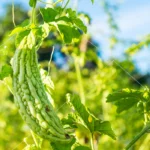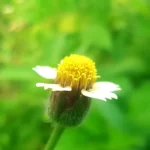Lollipop Plant or Golden Shrimp Plant (Pachystachys Lutea)- A Complete Guide on this magnificent addition to your garden
Lollipop Plant, also known as the Golden Shrimp Plant or Yellow Shrimp Plant is scientifically known as Pachystachys Lutea,. In this article, we will provide you with all the necessary information to successfully care for and propagate this beautiful plant. From its features and botanical name to its propagation techniques and common problems, we’ve got you covered. So let’s dive in and learn more about the stunning Lollipop Plant!

What is a Lollipop Plant (Golden Shrimp Plant or Pachystachys Lutea)?
Introduction to the Lollipop Plant
The Lollipop Plant, scientifically known as Pachystachys Lutea, is a tropical evergreen shrub that belongs to the Acanthaceae family. It is also commonly referred to as the Golden Shrimp Plant due to its golden or yellow flowers, which resemble shrimps. This plant is native to subtropical regions and is cherished for its attractive flower heads and showy bracts.
Botanical Name and Common Names
The Lollipop Plant, also known as Pachystachys Lutea, has various common names including Golden Shrimp Plant, Shrimp Plant, and Yellow Shrimp Plant. These names are derived from the plant’s unique appearance, with its golden bracts and small white flowers resembling shrimp.
Features of the Lollipop Plant
The Lollipop Plant is characterized by its dark green, evergreen foliage and long flowering season. It produces small white flowers surrounded by golden bracts, which make it a true showstopper in any garden or indoor space. This perennial shrub is relatively easy to care for, making it a popular choice among both beginner and experienced gardeners.
Common Varieties of Lollipop Plant
There are several popular varieties of Lollipop Plants that you can explore for your garden. Each variety possesses its unique characteristics, such as flower color, size, and growth habits. Here are a few noteworthy ones:
- Pachystachys lutea ‘Cardinal’s Guard’: This cultivar showcases vibrant, fiery red bracts that create a striking contrast against the lush green foliage. It adds a bold statement to any garden landscape.
- Pachystachys lutea ‘Compacta’: As the name suggests, this variety is more compact in size compared to the standard Lollipop Plant. It is an excellent choice for small gardens or containers.
- Pachystachys lutea ‘Neon Lights’: With its bright yellow bracts and compact growth habit, this variety brings a cheerful radiance to any garden setting. It works well as a focal point or when planted in groups.
How to Care for a Lollipop Plant? Plant Care Tips for Lollipop Plant
The Lollipop Plant thrives in moist and well-drained soil. It prefers partial shade, especially during the hotter months, as excessive sunlight can scorch its delicate flowers. Regular watering is essential to keep the soil moist, but be careful not to overwater as this can lead to root rot. Applying a balanced liquid fertilizer during the growing season will promote healthy growth and abundant blooms.

Light and Temperature Needs
Lollipop Plants thrive in bright, indirect light. Ideally, they require 4 to 6 hours of filtered sunlight per day. Placing them near east or west-facing windows or providing them with partial shade during the hottest hours of the day is crucial. These plants prefer temperatures between 20°C and 30°C, making them well-suited for the Indian climate.
Climate, Soil, and Drainage Considerations
Lollipop Plants prefer a tropical climate with high humidity levels. They thrive in areas with consistent temperatures and abundant moisture. In Indian gardens, it is essential to provide ample humidity by misting the plants regularly or placing them in well-ventilated areas.
When it comes to soil, Lollipop Plants prefer well-draining, loamy soil with a slightly acidic to neutral pH. Ensure good drainage by incorporating organic matter into the soil, such as compost or peat moss, to improve its structure and moisture retention capabilities.
Watering and Humidity Requirements
Lollipop Plants require moderate and consistent watering. It is important to keep the soil evenly moist, but avoid overwatering or allowing the roots to sit in standing water, as this can lead to root rot. Aim to water the plants when the top inch of the soil feels dry to the touch. During hot and dry periods, you may need to increase the frequency of watering to prevent the soil from drying out completely.
Maintaining adequate humidity is crucial for the health of Lollipop Plants. You can increase humidity by misting the leaves regularly or placing a tray filled with water near the plants. This helps create a microclimate that mimics their native tropical environment.

Propagation Techniques for Lollipop Plant – How to Propagate Yellow Shrimp Plant with Ease
Propagating Lollipop Plant from Cuttings
One of the most popular methods of propagating the Lollipop Plant is through stem cuttings. To do this, select a healthy stem with several nodes and remove any lower leaves. Dip the cut end in a rooting hormone to promote root development, then plant the cutting in a well-draining potting mix. Place the pot in a warm and humid environment and keep the soil consistently moist. In a few weeks, roots should develop, and you can transplant the cutting into a larger pot or garden bed.
Propagating Lollipop Plant from Division
Another way to propagate the Lollipop Plant is through division. This method is best done during the spring and summer months when the plant is actively growing. Carefully dig up the plant and separate the root clump into smaller sections, ensuring each section has a healthy stem and roots. Plant the divisions in individual pots or garden beds with well-draining soil and provide the same care as mature plants.
Propagating Lollipop Plant from Seeds
While less common, the Lollipop Plant can also be propagated from seeds. Collect mature seeds from the plant’s flower heads and sow them in a seed-starting mix. Keep the soil consistently moist and provide a warm environment for germination. Once the seedlings have grown large enough, they can be transplanted into individual pots or garden beds.

Pruning and Maintenance of Lollipop Plant
When and How to Prune a Lollipop Plant
The Lollipop Plant benefits from regular pruning to maintain its shape and encourage new growth. Prune the plant in early spring before the growing season begins. Trim back any dead or damaged branches, as well as any leggy growth. You can also remove spent flowers to promote continuous blooming. Use clean and sharp pruning tools to ensure a clean cut and reduce the risk of disease spread.
Maintenance Tips for Lollipop Plant
In addition to regular pruning, the Lollipop Plant requires basic maintenance to thrive. Keep an eye out for any signs of pests or diseases, such as spider mites or fungal infections. Treat these issues promptly to prevent further damage to the plant. Provide the plant with a balanced liquid fertilizer during the growing season to ensure it receives adequate nutrients for healthy growth and vibrant blooms.
Dealing with Leggy Growth
If your Lollipop Plant starts to develop leggy growth, it may be a sign that it is not receiving enough light. Consider moving it to a brighter location or providing supplemental artificial lighting. Pruning back the leggy stems can also help promote bushier growth and a more compact appearance.
Potting and Growing Lollipop Plant Indoors
Choosing the Right Pot for Lollipop Plant
When growing the Lollipop Plant indoors, choosing the right pot is crucial. Opt for a pot with drainage holes to prevent overwatering and root rot. The pot should be large enough to accommodate the plant’s root system and allow for future growth. Consider using a decorative pot that matches your interior décor to add a touch of elegance to your space.
Best Soil Mix for Lollipop Plant
The Lollipop Plant prefers a well-draining soil mix that retains moisture without becoming waterlogged. A mix of peat moss, perlite, and potting soil or orchid bark is a popular choice. This type of soil mix ensures good drainage while providing the necessary nutrients for the plant’s growth. You can also grow using Shehri Kisaan Potting Blend Mixture with a mix of Lava Rocks that range between 2 to 10 mm, depending on your pot size and existing planting media.
Caring for Lollipop Plant Indoors
Indoor Lollipop Plants require similar care to their outdoor counterparts. Place the plant in a location with bright, indirect light, away from cold drafts or direct sunlight. Maintain moderate humidity levels around the plant by misting its foliage or using a humidifier. Water the plant when the top inch of soil feels dry, and fertilize it with a balanced liquid fertilizer every few weeks during the growing season.

Common Problems and Pests of Lollipop Plant
Dealing with Spider Mites on Lollipop Plant
Spider mites can be a common pest problem for the Lollipop Plant. These tiny pests can cause yellowing leaves, webbing, and stunted growth. To control spider mites, regularly inspect your plant for any signs of infestation. If detected, isolate the affected plant and treat it with an appropriate miticide or insecticidal soap according to the manufacturer’s instructions. Additionally, increasing humidity around the plant can help deter spider mites.
Preventing and Treating Fungal Diseases
Fungal diseases can pose a threat to the health of the Lollipop Plant, especially if it is grown in overly moist conditions. To prevent fungal infections, avoid overwatering and ensure proper drainage. If your plant does develop a fungal disease, such as powdery mildew or root rot, treat it with a suitable fungicide and adjust your watering practices accordingly. Remove any infected plant parts to prevent the spread of the disease.

Identifying and Managing Nutritional Deficiencies
Nutritional deficiencies can manifest as yellowing or discolored leaves in the Lollipop Plant. It is important to identify the specific nutrient deficiency to provide the appropriate treatment. Common deficiencies include nitrogen, phosphorus, and potassium. To address these deficiencies, it is important to understand the role of each nutrient and their impact on plant growth. Each nutrient plays a specific role in the growth and development of plants. Understanding these roles is essential for addressing deficiencies and promoting optimal plant growth.
- Nitrogen (N): Nitrogen is crucial for plants as it is a key component of amino acids, proteins, and chlorophyll. It is responsible for the green color of leaves and promotes leaf and stem growth.
- Phosphorus (P): Phosphorus is essential for energy transfer and storage in plants. It promotes root development, flowering, and fruiting. It is also involved in DNA and RNA synthesis.
- Potassium (K): Potassium regulates water uptake, improves disease resistance, and enhances overall plant growth. It plays a vital role in photosynthesis, nutrient transport, and enzyme activation.
- Calcium (Ca): Calcium is important for cell wall structure and integrity. It helps in developing strong plant tissues and enhances root growth.
- Magnesium (Mg): Magnesium is a component of chlorophyll and plays a critical role in photosynthesis and energy production. It is also involved in enzyme activation and helps in the synthesis of DNA and RNA.
- Sulfur (S): Sulfur is essential for the synthesis of amino acids, proteins, and vitamins. It contributes to overall plant growth, promotes root development, and helps in nutrient uptake.
- Iron (Fe): Iron is necessary for the production of chlorophyll, which is essential for photosynthesis. It is also involved in enzyme activities and electron transfer within the plant.
- Manganese (Mn): Manganese is involved in photosynthesis, respiration, and nitrogen metabolism. It helps plants utilize other nutrients effectively and promotes root growth.
- Zinc (Zn): Zinc is crucial for enzyme activities and hormone production. It promotes plant growth, regulates the synthesis of proteins, and aids in nutrient uptake.
- Copper (Cu): Copper is required for enzyme activation and plays an important role in plant growth and reproduction. It helps in the synthesis of lignin, a component of cell walls.
By understanding the specific roles of each nutrient, growers can identify deficiencies and provide targeted solutions to improve plant health and growth. This can be achieved through soil testing, balanced fertilizer applications, and adopting proper cultural practices to ensure plants receive adequate and balanced nutrition.
About our Web Store www.shehrikisaan.com
For a wide selection of fertilizers and soil amendments suitable for all these plants, we invite you to explore our esteemed webstore at www.shehrikisaan.com. Our webstore offers a comprehensive range of products designed to enhance the growth and vitality of your plants.
Whether you’re seeking specialized fertilizers, organic amendments, or premium-quality soil enhancers, our webstore is your one-stop destination. With our commitment to providing garden enthusiasts with top-notch products, you can trust us to cater to your gardening needs effectively. Visit www.shehrikisaan.com today and unlock the secret to flourishing plants.
Discover our Social Media Presence and web store. Choose your favourite platforms:
















